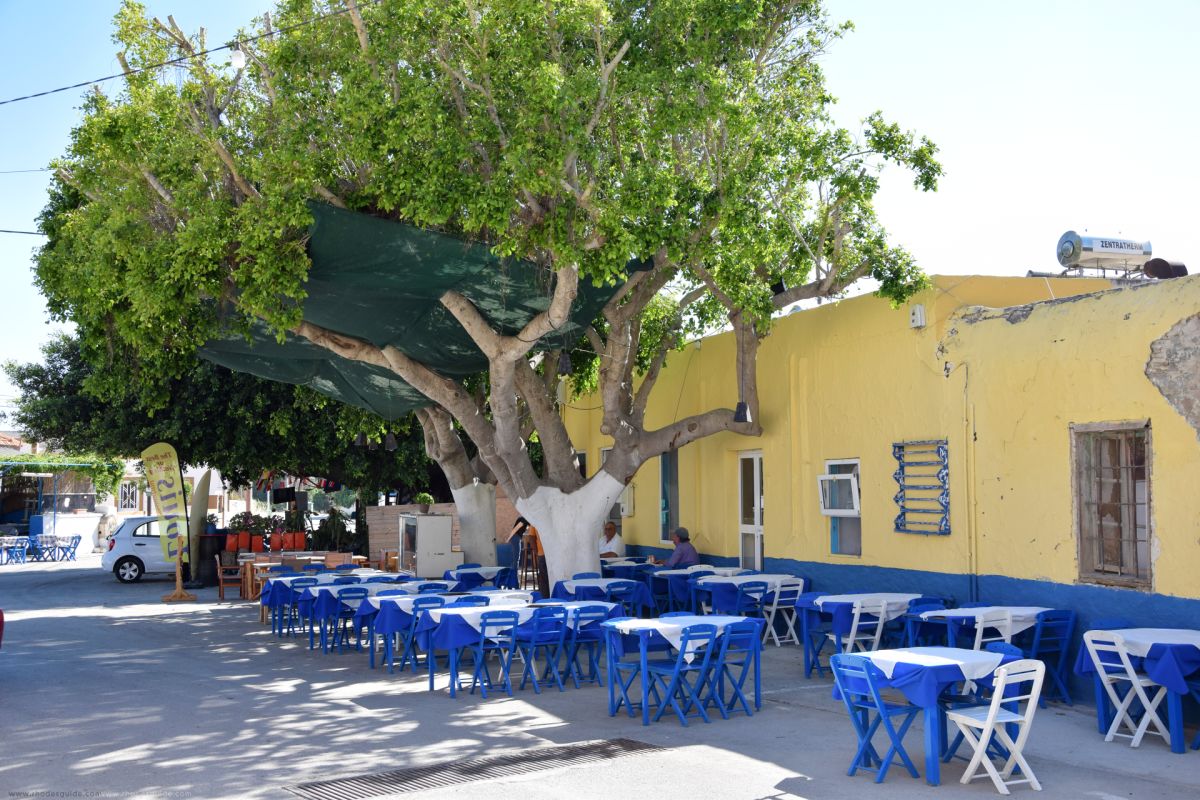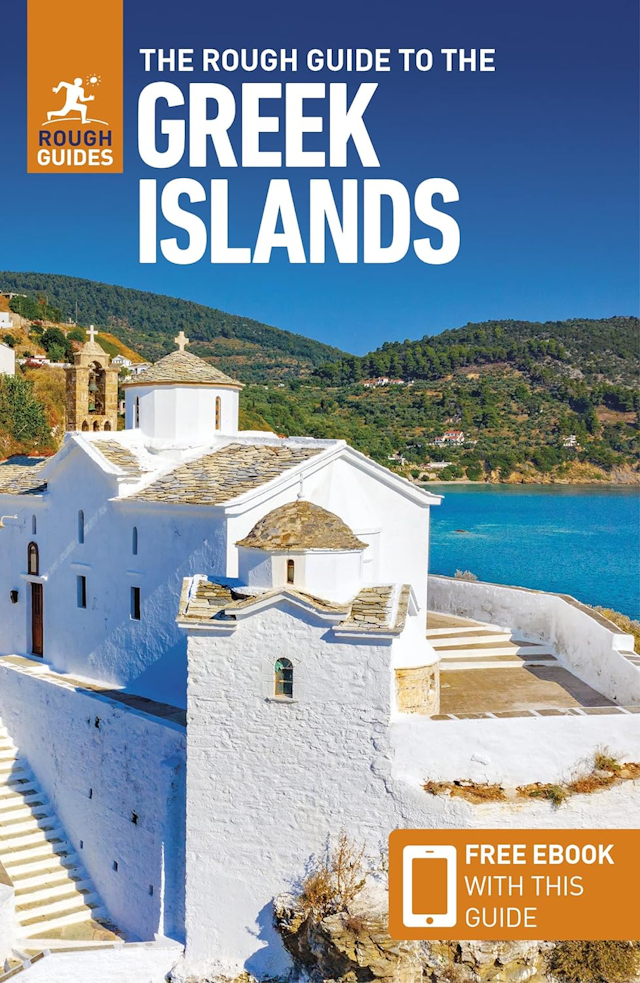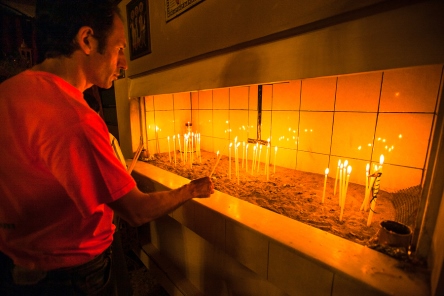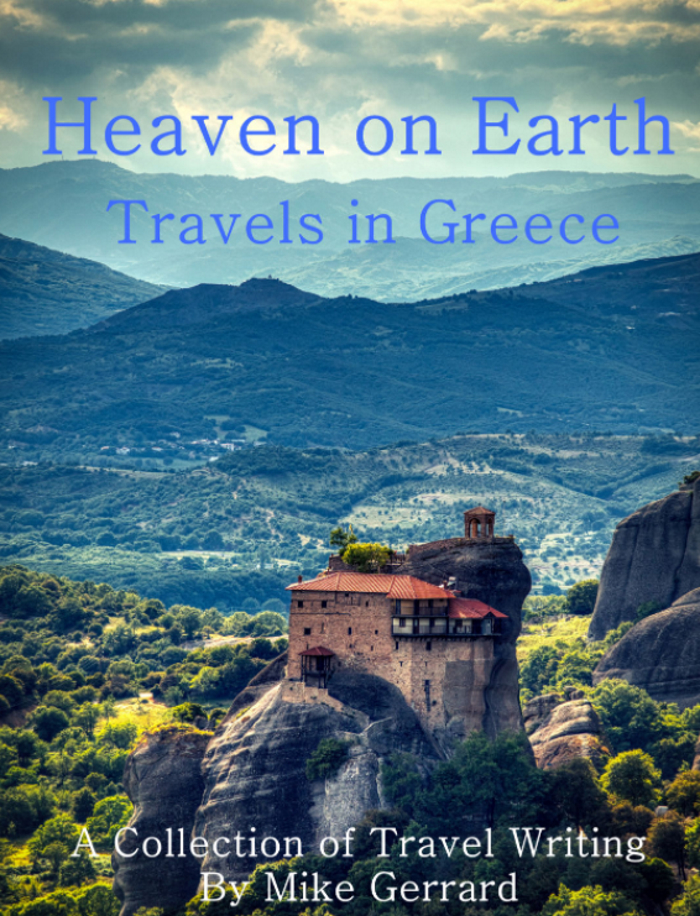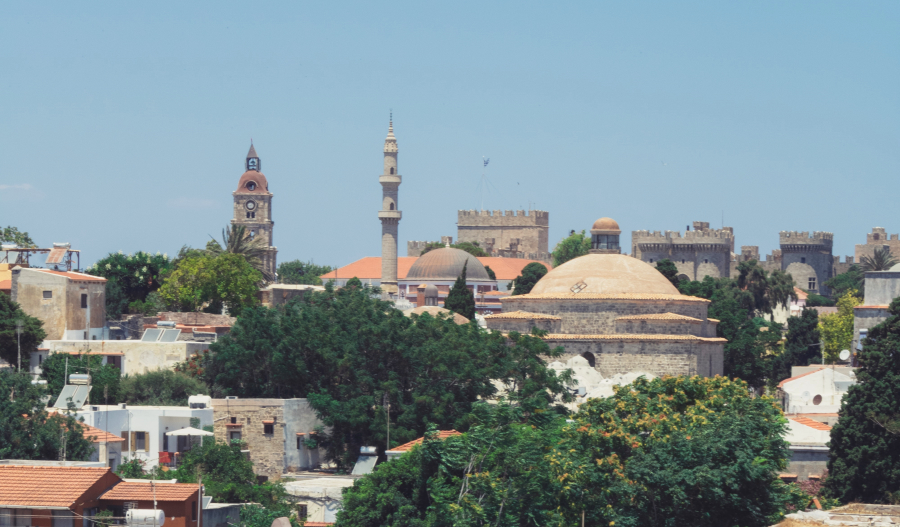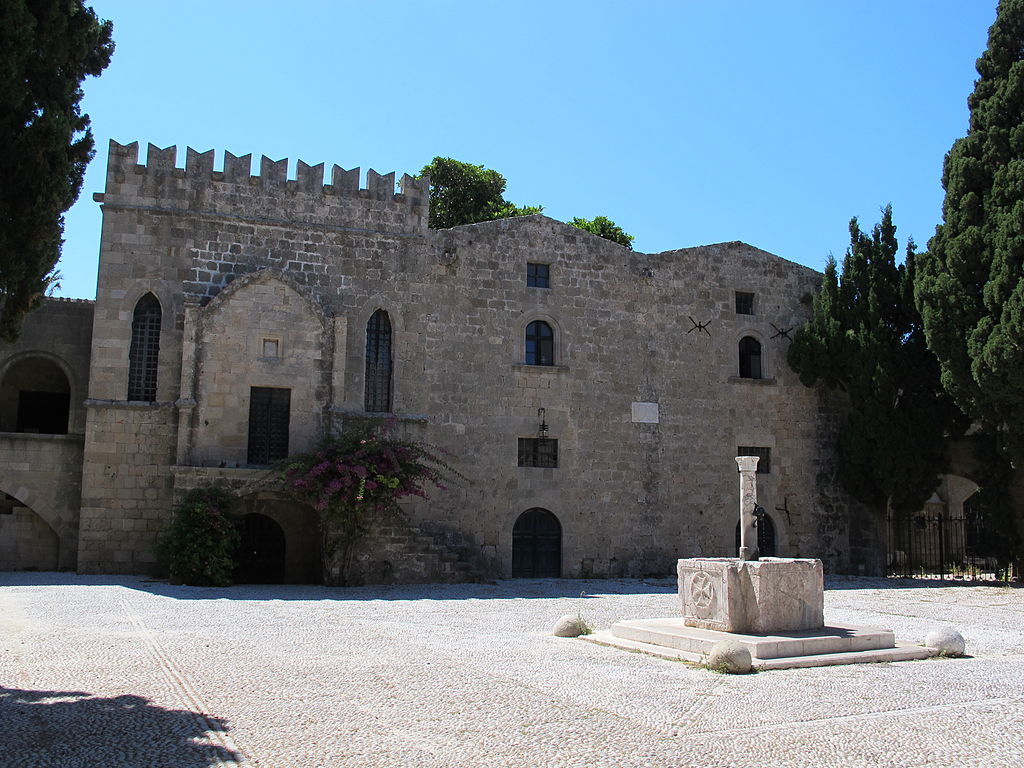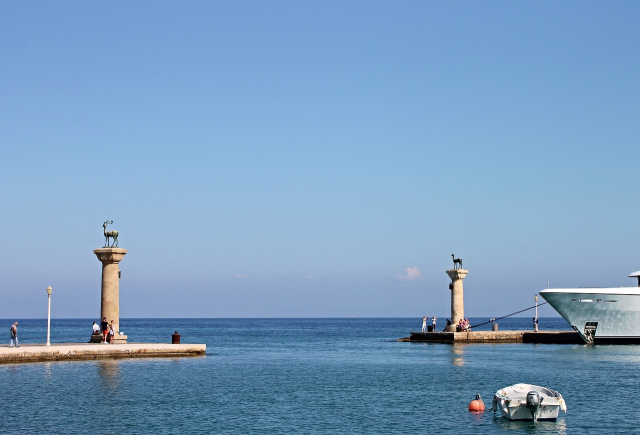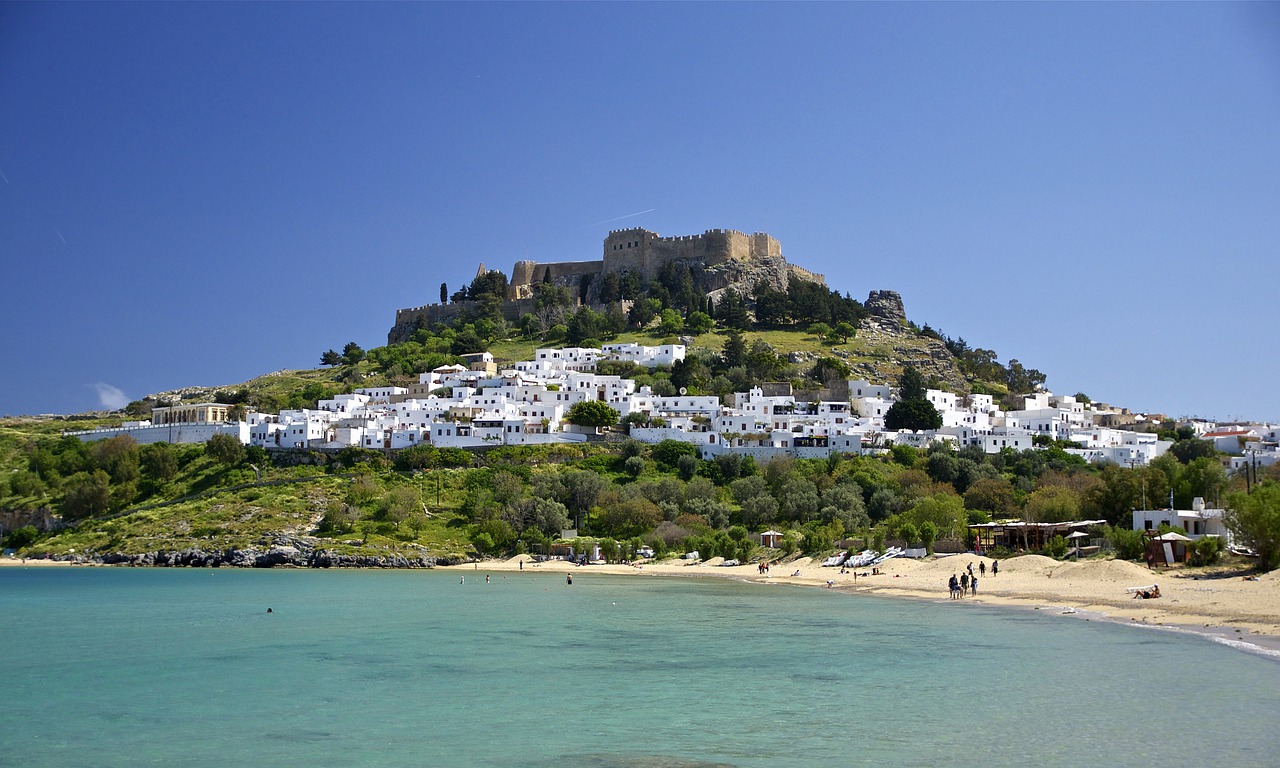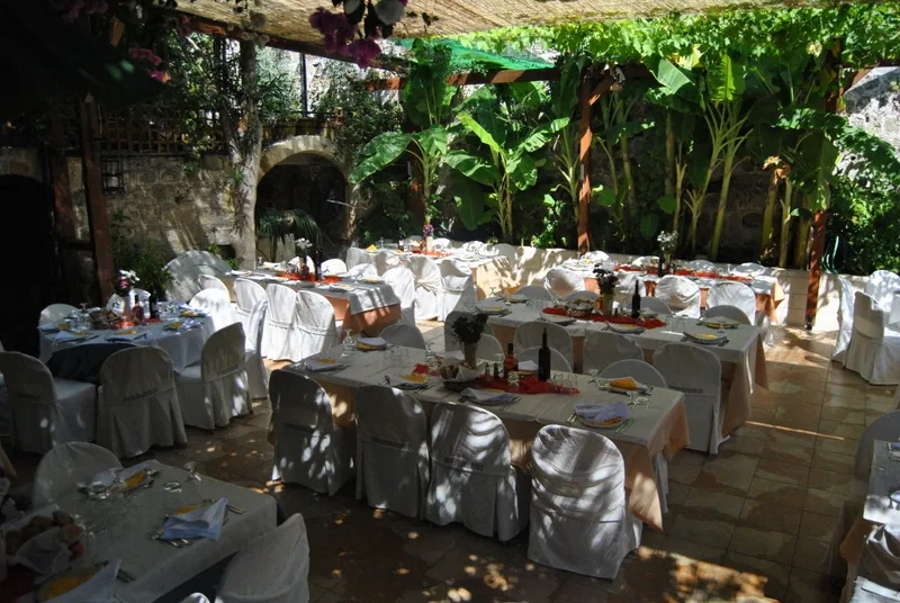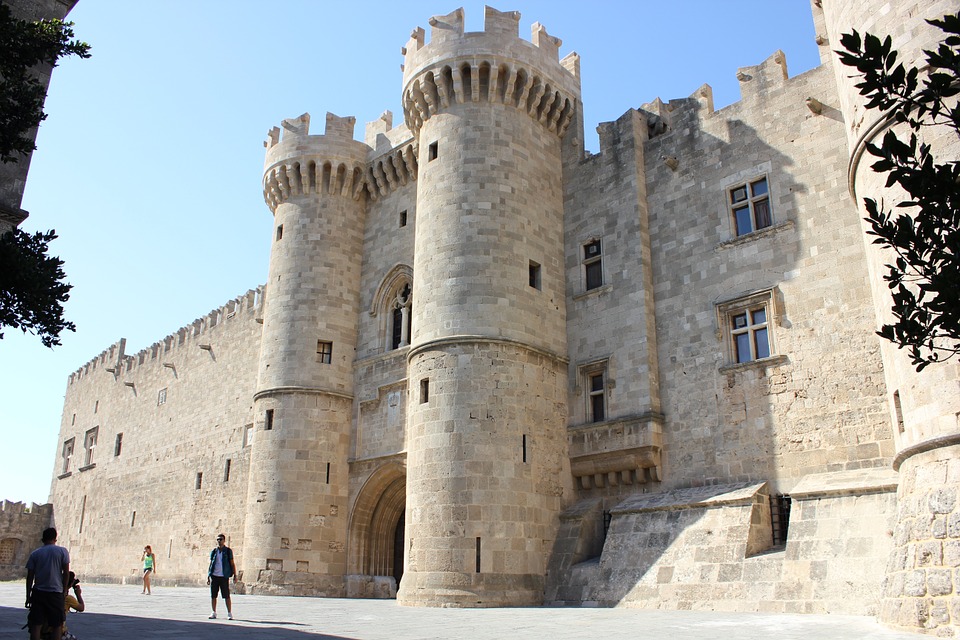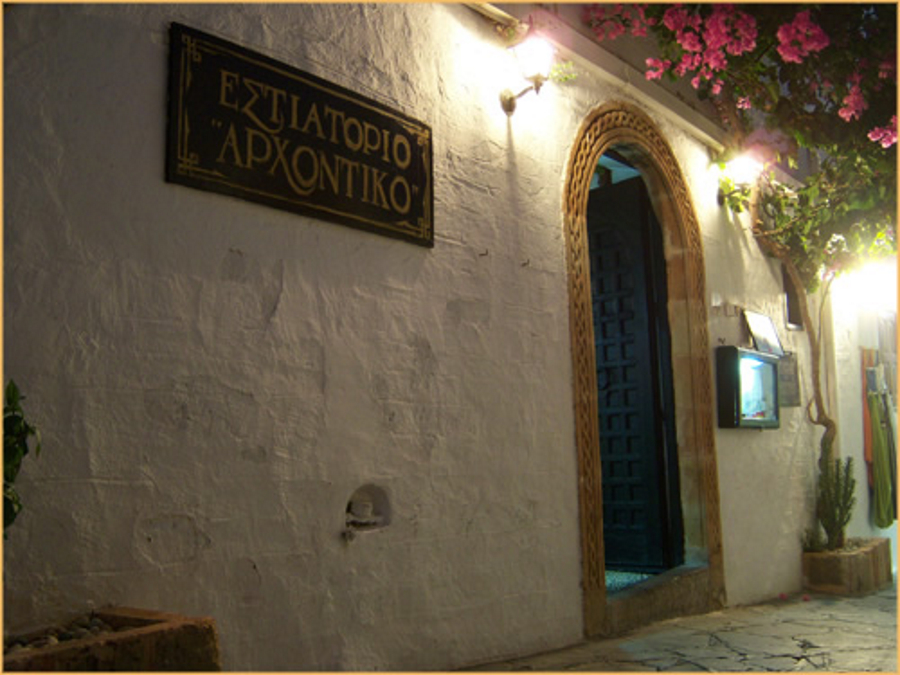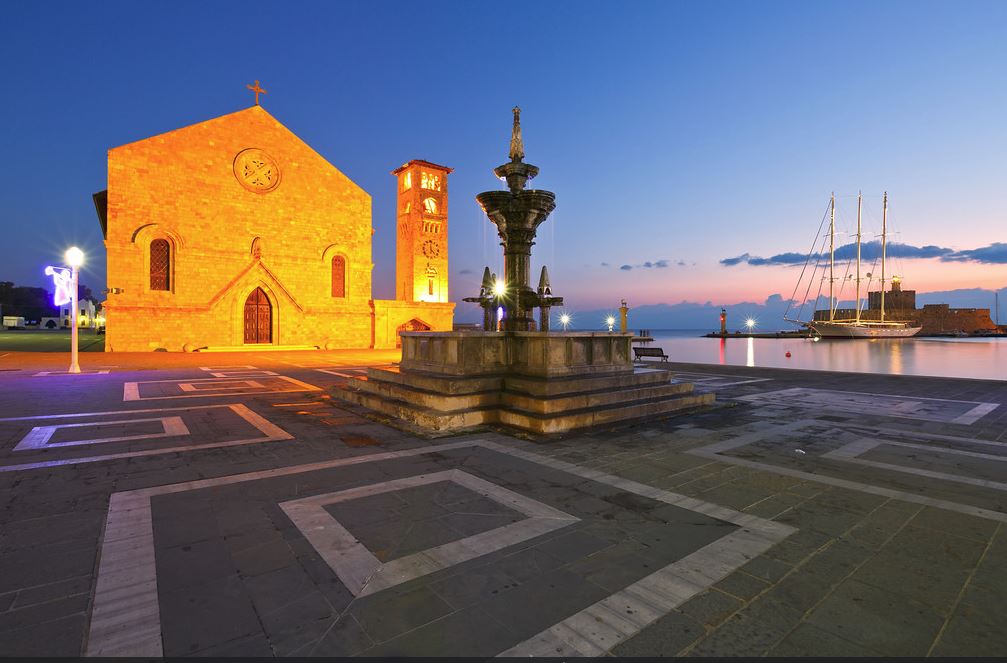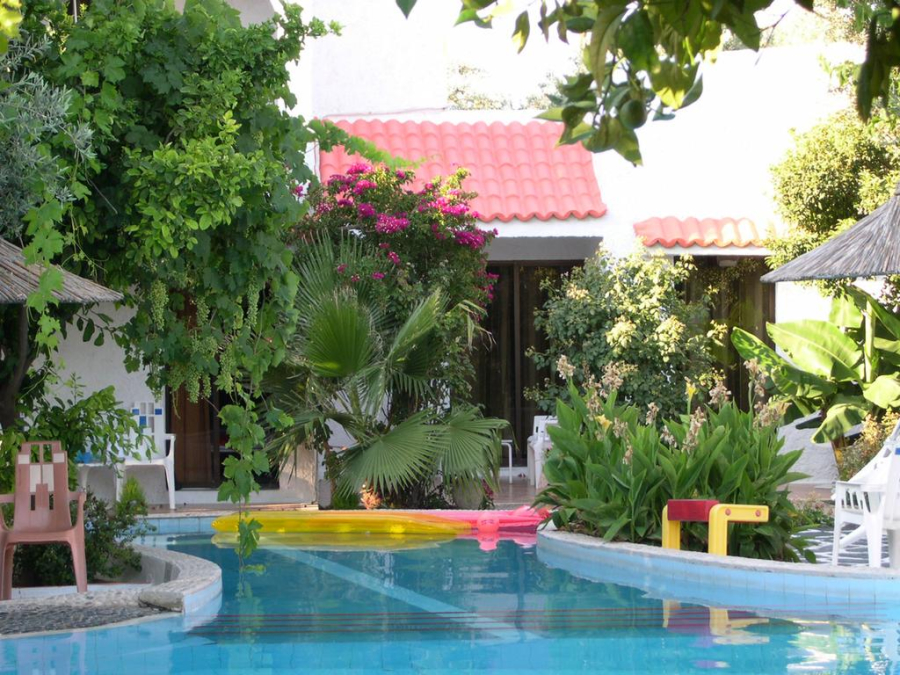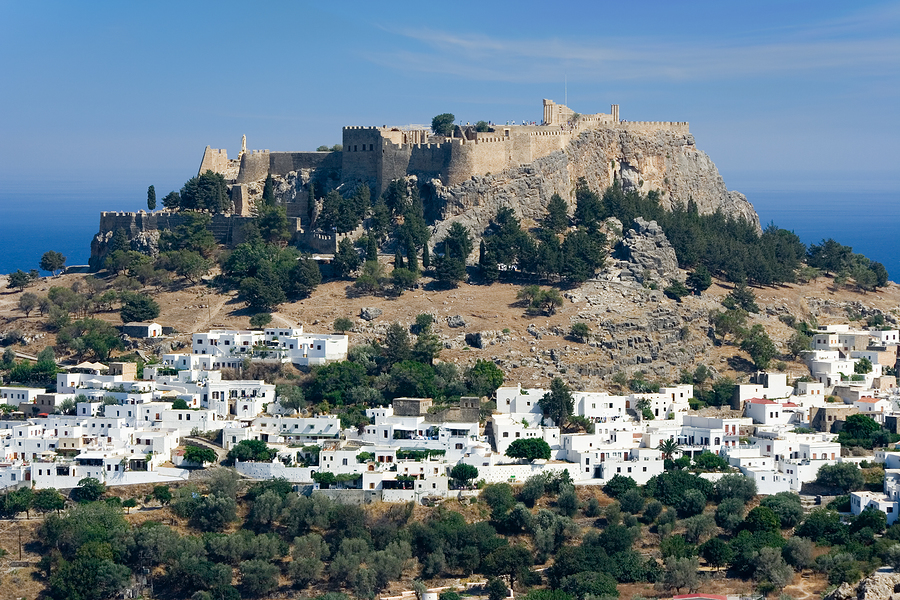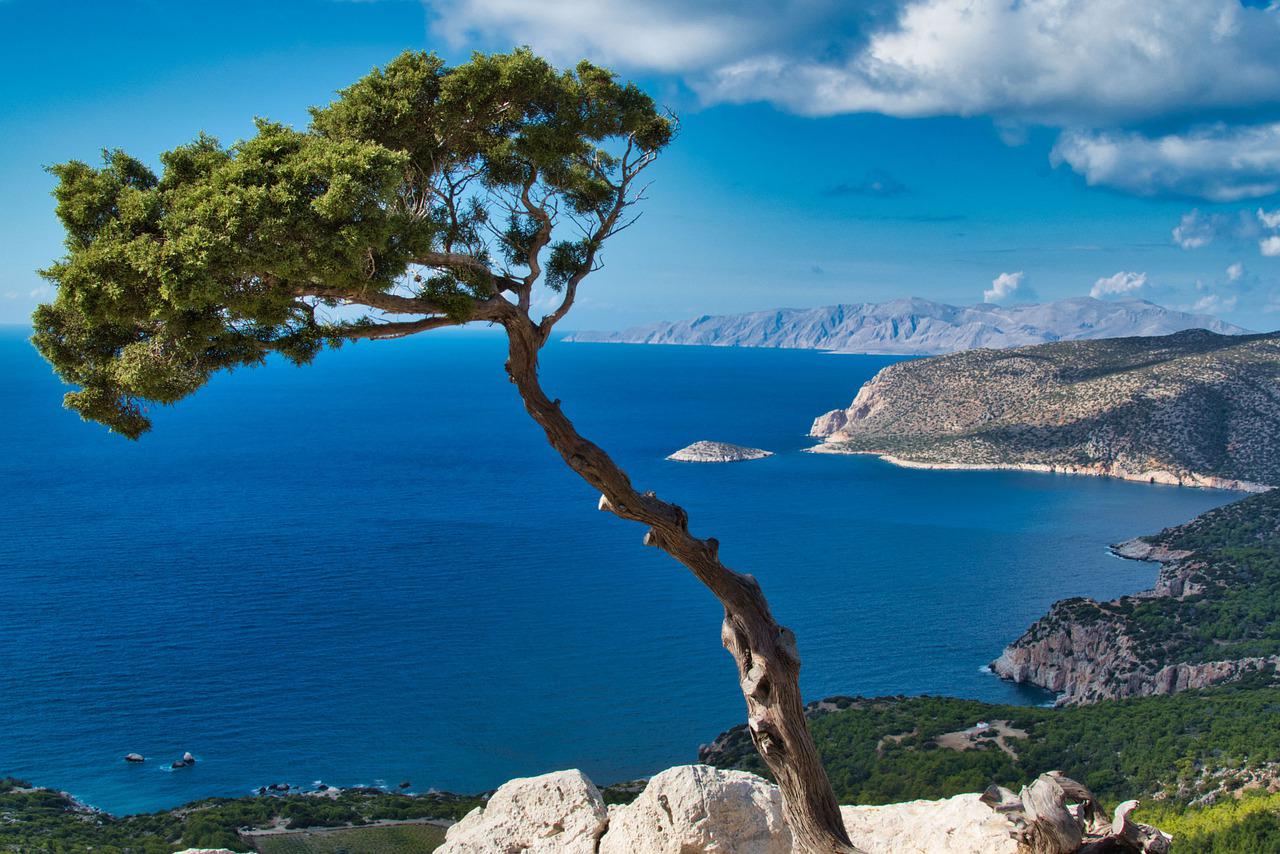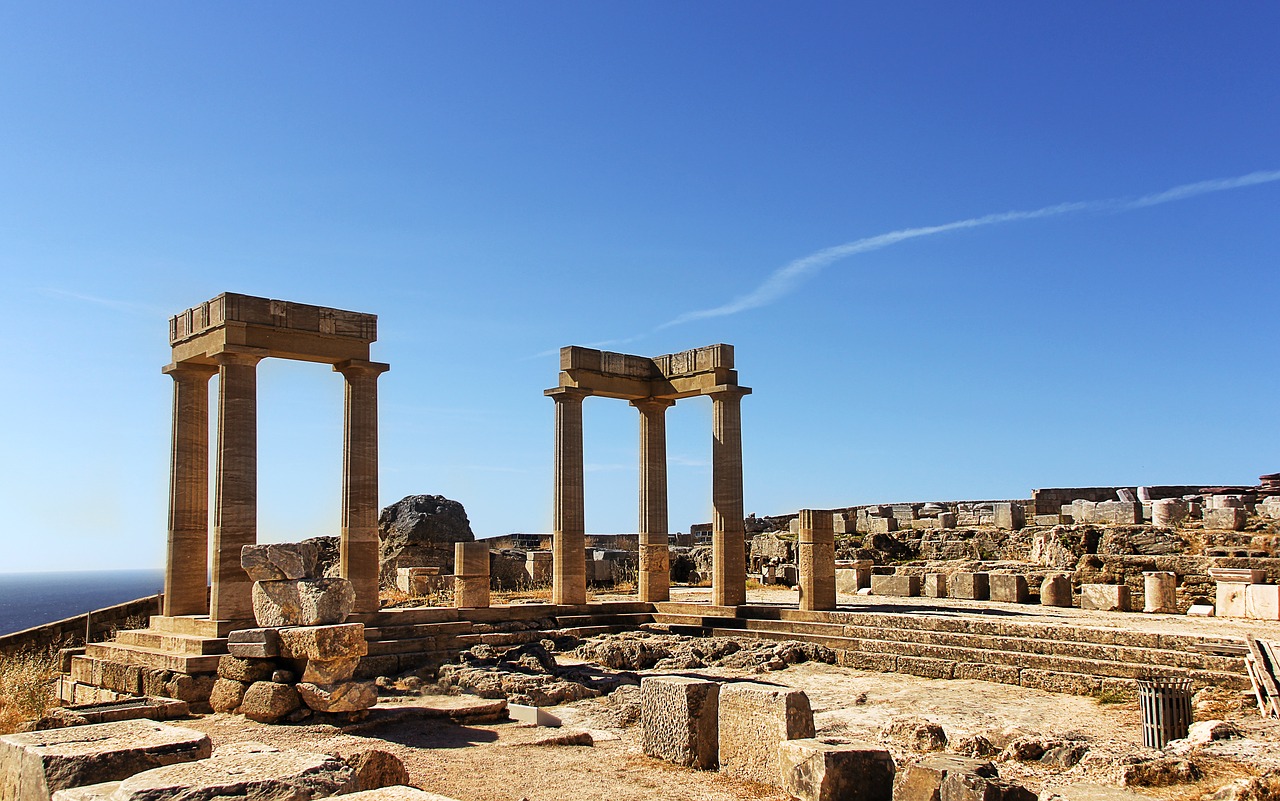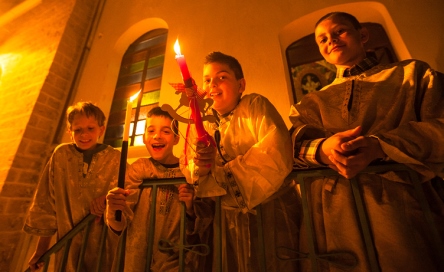- HOME
- Dodecanese
- Rhodes
- Easter on Rhodes
Easter on Rhodes
During Easter on Rhodes, Greece Travel Secrets publisher Mike Gerrard travels from Lindos to Kattavia to visit a monastery and experience Easter Greek-style.
We left Lindos at midnight on Saturday as the church bell was ringing, the fireworks exploding and the villagers were taking their Easter candles home and bidding each other Christos Anesti, Christ is Risen. For Ianni this was to be a rare chance to see his family in the south of Rhodes, as for 180 days of the summer season he would be working in a bar he co-owned in Lindos, catering to the mass of visitors, seven days a week for at least ten hours a day.
As I’d already helped him get his bar profits off to a good start for the year, he invited me to spend Easter Sunday with his family in the village of Kattavia, where he returns in the winter. By 1am we were there, and after Ianni woke his parents up to tell them he was home, we went to light a candle in the village church, where people were singing and praying their way through till Sunday morning, the air thick with incense and chanting.
For such a small village, the church is enormous, at least twenty times the size of the tiny Byzantine one in Lindos. Kattavia is home to about 2,000 people, Ianni tells me, though only 350 or so live there permanently, the rest away working for ten or twenty years in America or Australia while their homes stand empty awaiting their return. Meanwhile, the life of the village centres on its church, two shops, three cafés and a solitary garage.
As we left the church, Ianni said he would take me to the hilltop monastery at Skiadi, a few miles away, to show me how the boys from his village spend Easter Saturday night. The monastery means a great deal to his family, as one son from each generation has always gone into the church, with Ianni’s grandfather rising to the rank of Bishop of Skiadi.
The monastery dates from the 14th century, and has housed a holy icon since the 15th, when a heretic stabbed a painting of the Madonna and Child which promptly spurted blood from the wound in the Madonna’s cheek.
We didn’t see the icon that night as the services were over by the time we arrived. Ianni woke up the caretaker who, like the other Greeks I saw, didn’t seem to mind being disturbed in the middle of the night. Well, not on this night, anyway. The caretaker said that the boys from Kattavia had set off home at 11pm, though there were still over 100 men there who had come from every part of Rhodes to spend Easter at the monastery.
Read our review of the Best Guidebook to Rhodes
We groped our way back in absolute darkness, feeling our way along the monastery walls to the Ford pick-up that Ianni had borrowed, then bumped and pitched back to the village down a road that was like a bomb site. ‘You know what we call this road?’ Ianni asked me. ‘We call it The Road that Kills People. A pity there is no moon as you cannot see over the side and down to the beach. Is beautiful.’
Some Cool Rhodes Souvenirs
It was around 3am when we arrived back in Kattavia and found half a dozen of Ianni’s friends sitting round drinking Scotch and beer, in one of Greece’s typical ‘sell everything’ shops, and watching what seemed to be interference on an enormous TV. It turned out that we were the interference as we’d interrupted their blue video session. They asked if I’d be offended if they put the film back on.
The French frolics weren’t quite the Greek Easter experience I was expecting, but as Ianni explained, there wasn’t a lot to do in Kattavia. One of the men was poised with his finger on the remote control and switched off at every passing noise from the street, from where the TV was clearly visible. The Gallic gropings and gruntings were ended for good when one of the men saw his parents pull up and park outside, and the flickering figures had hardly faded from the screen when his mother came in carrying a more traditional Greek offering: a pot of Easter soup.
This was our cue to return to Ianni’s parents for a 4am meal of Greek salad, slabs of cheese the size of house bricks, dark local bread, and a bowl of Magaritsa, an egg and lemon soup with rice and heavy with the offal from the lambs whose meat would be roasted for Easter Sunday.
‘OK,’ Ianni said, ‘now we have four hours sleep. Breakfast at eight o’clock. You are sleeping in my grandmother’s house.’ He took me fifty yards or so to the house and marched in, switching on the light to reveal grandmother and a family aunt sleeping head-to-toe in a single bed, leaving the other one free for their unexpected guest.
Although grandma had been told about my overnight visit, she had forgotten by the time she woke up and was more than a little confused on Easter Sunday morning to find a bearded figure sleeping across the room from her.
Breakfast was three fresh fried eggs and the inevitable salad, after which Ianni drove me around to see some of the local beaches. They were easily the most beautiful I’d seen on the island, the more so for being empty of the visitors who were already, in the opening weeks of the season, crowding the two main centres of Rhodes Town and Lindos.
On the three long sweeping beaches we visited we saw no-one but a single Greek family, picnicking and dancing by the side of their battered green van. This was on the beach at Prasonisi, the southernmost tip of Rhodes, the site of a Greek village in pre-Christian times, where Ianni showed me a beautiful floor mosaic he’d found in the scrub behind the beach.
Driving back to Kattavia we passed two roadside shrines side by side, an unusual sight. Ianni told me the story. Two lovers from the village had fallen foul of the Greek law forbidding a man to marry his sister-in-law, and they chose to live together in death at Prasonisi.
In Kattavia a service was in progress outside Ianni’s parents’ house in the village square, and the priest had brought the holy icon down from the monastery. The villagers, mostly in black, formed a half-moon round the priest and the painting, against a backdrop of blue sky and green hills. On the cheek of the Madonna you could see the cut from the heretic’s knife, with brown stains where the blood was said to have flowed. At the end of the service everyone queued to kiss the silvery painting and Ianni paid the priest to have the icon stay overnight in his parents’ house: a blessing and an Easter gift for his mother.
Lunch was barbecued lamb and the sweet red local wine. My plate was piled with large hunks of meat and anything that needed finishing, but my stomach’s relief when the table was finally cleared was short-lived.
‘Now,’ said Ianni, ‘we go to my grandmother’s house. My aunt has cooked a different kind of lamb… come, we must eat there too.’
Must we, I thought, though I somehow expanded to fit in my fourth meal in less than twelve hours – and a bottle of retsina, a milk-sweet pastry and the Greek coffee that had been so hard to find in the more commercial Lindos.
Still, it was back to Lindos we went, stopping only to buy a tub of honey and passing, outside Kattavia, the Turkish community of half-a-dozen houses, of fields, donkeys, children and olive groves.
‘Do you get on with the Turkish people?’ I asked Ianni, as the Greeks and the Turks haven’t always been the easiest of neighbours.
‘Of course, why should we not? They are poor people, like we are. My best friend in Kattavia is the fisherman, Mustapha.’
And we drove on to Lindos where, by five o’clock, Ianni was back behind the bar. There were only 170 more days to go until October and the end of the season, when he could return to Kattavia and tend his father’s olive groves all day, and in the evening talk with his friend Mustapha.
Heaven on Earth
This story also appears in Heaven on Earth, a collection of travel writing about Greece by Mike Gerrard, co-publisher of Greece Travel Secrets. The book includes accounts published in newspapers and magazines of some of Mike's most memorable experiences of travelling in Greece. Click here or on the cover image to take a look.
Latest Posts
-
The Lesser-Known Traditions of Greek Easter
Step off the beaten path this spring and discover the enchanting — and often surprising — Easter traditions found across Greece. -
Easter in the Mystical Castle of Monemvasia
In the castle town of Monemvasia, with its dramatic medieval backdrop and sea views, Easter is a deeply spiritual and atmospheric experience. -
Sifnos: Greece’s Hidden Culinary Star on the Rise
Sifnos, a Cycladic island, is gaining fame for its rich culinary heritage, especially the beloved melopita honey-cheese tart. -
Easter in Leonidio: A Tapestry of Light, Culture and Cliffs
In Leonidio, Easter comes alive with handmade hot air balloons in the sky and lanterns made from bitter oranges in the streets. -
April 9 Strike in Greece to Impact Public Transport, Ferries and Air Travel
Transportation and travel across Greece will face disruptions on Wednesday, April 9, as public transport, ferry and aviation workers join a nationwide strike called by Greek labor unions. -
Ancient Theater of Lefkada Brought Fully to Light Following Systematic Excavation
The Greek Culture Ministry has announced that the first ancient theater ever identified in the Ionian Islands has recently been brought fully to light on Lefkada, revealing an impressive monument that… -
Seven Greek Traditions Recognized as Intangible Cultural Heritage
From traditional barrel-making to age-old folk dances, seven new entries on Greece’s National Inventory preserve the country’s living heritage for future generations. -
Greek Air Traffic Controllers to Hold 24-hour Strike, Disrupting Flights on April 9
The Hellenic Air Traffic Controllers Union have announced a 24-hour strike for Wednesday, April 9, in response to the protest called by the Civil Servants’ Confederation (ADEDY). The strike is being h… -
Ten Best Budget Hotels on Santorini
Greece Travel Secrets picks the ten best budget hotels on Santorini, some with caldera views, some near beaches and some close to the heart of Fira. -
No Ferries in Greece on April 9 as Seamen Join Nationwide Strike
The Pan-Hellenic Seamen’s Federation (PNO) has announced its participation in the 24-hour strike called by the General Confederation of Greek Labor (GSEE) on Wednesday, April 9. The strike, which will…



